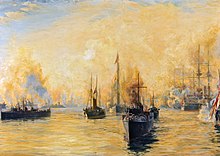
Duke of Kent is a title that has been created several times in the peerages of Great Britain and the United Kingdom, most recently as a royal dukedom for the fourth son of King George V. Since 1942, the title has been held by Prince Edward, Queen Elizabeth II's cousin.
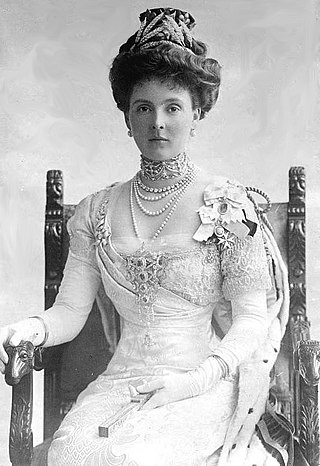
Princess Alice, Countess of Athlone was a member of the British royal family. She was one of the longest-lived British royals. Princess Alice was the chatelaine of Rideau Hall in Ottawa from 1940 until 1946, while her husband Alexander Cambridge, 1st Earl of Athlone, served as Governor General of Canada.
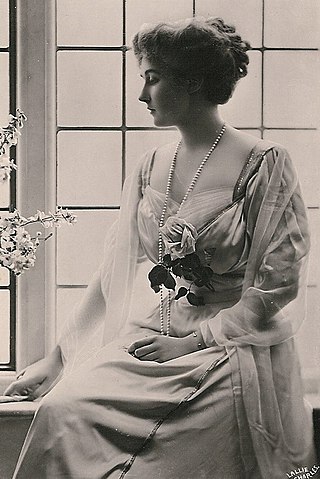
Lady Victoria Patricia Helena Elizabeth Ramsay was a granddaughter of Queen Victoria. Upon her marriage to Alexander Ramsay, she relinquished her title of a British princess and the style of Royal Highness.

Princess Helena Victoria of Schleswig-Holstein was a granddaughter of Queen Victoria of the United Kingdom. From 1917 her name was simply Princess Helena Victoria.
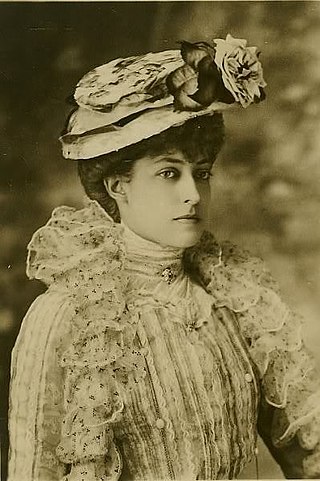
Princess Victoria was the fourth child and second daughter of King Edward VII and Queen Alexandra and the younger sister of King George V.

The Royal Burial Ground is a cemetery used by the British royal family. Consecrated on 23 October 1928 by the Bishop of Oxford, it is adjacent to the Royal Mausoleum, which was built in 1862 to house the tomb of Queen Victoria and Prince Albert. The burial ground lies on the Frogmore estate within the Home Park at Windsor, in the English county of Berkshire.
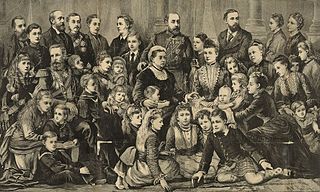
Queen Victoria, the British monarch from 1837 to 1901, and Prince Albert had 9 children, 42 grandchildren, and 87 great-grandchildren. Victoria was called the "grandmother of Europe".
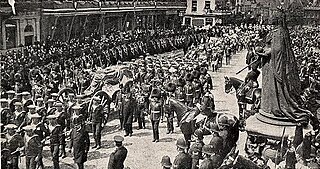
Edward VII, King of the United Kingdom of Great Britain and Ireland and Emperor of India, died on Friday 6 May 1910 at the age of 68. His state funeral occurred two weeks later, on 20 May 1910. He was succeeded by his eldest living son, George V.
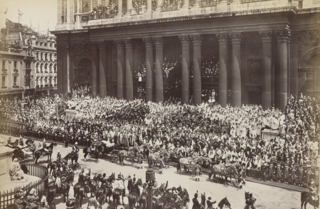
The Diamond Jubilee of Queen Victoria was officially celebrated on 22 June 1897 to mark the occasion of the 60th anniversary of Queen Victoria's accession on 20 June 1837. Queen Victoria was the first British monarch ever to celebrate a Diamond Jubilee.

The Golden Jubilee of Queen Victoria was celebrated on 20 and 21 June 1887 to mark the 50th anniversary of Queen Victoria's accession on 20 June 1837. It was celebrated with a Thanksgiving Service at Westminster Abbey, and a banquet to which 50 European kings and princes were invited.

St George's Chapel at Windsor Castle in England is a castle chapel built in the late-medieval Perpendicular Gothic style. It is a Royal Peculiar, and the Chapel of the Order of the Garter. St George's Chapel was founded in the 14th century by King Edward III and extensively enlarged in the late 15th century. It is located in the Lower Ward of the castle.

On 6 July 1893, Prince George, Duke of York, and Princess Victoria Mary of Teck were married at the Chapel Royal, St. James's Palace, in London, England.

On 30 March 2002 at 15:15 GMT, Queen Elizabeth The Queen Mother, widow to King George VI and mother to Queen Elizabeth II, died at the age of 101 at Royal Lodge, Windsor. The death of the Queen Mother set in motion Operation Tay Bridge, a plan detailing procedures including the dissemination of information, national mourning, and her funeral. Representatives of nations and groups around the world sent condolences to the Queen, the British people, and citizens of the Commonwealth. Flowers and messages of condolence were left by the public at royal residences, with members of the royal family publicly paying tribute to the Queen Mother in the days after her death. Her funeral, held on 9 April 2002 at Westminster Abbey in London, attracted 10 million viewers in the United Kingdom and cost £5.4 million.

The wedding of Queen Victoria of the United Kingdom and Prince Albert of Saxe-Coburg and Gotha took place on 10 February 1840 at Chapel Royal, St. James's Palace, in London.
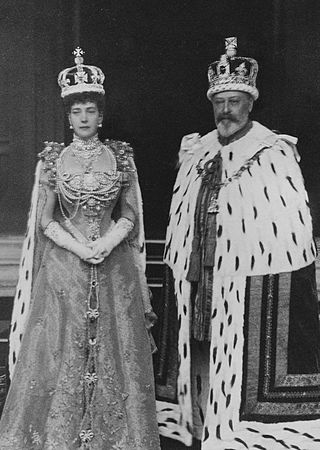
The coronation of Edward VII and his wife, Alexandra, as king and queen of the United Kingdom and the British Dominions took place at Westminster Abbey, London, on 9 August 1902. Originally scheduled for 26 June of that year, the ceremony had been postponed at very short notice, because the King had been taken ill with an abdominal abscess that required immediate surgery. In contrast to the coronation of Queen Victoria, Edward's mother and predecessor, some 64 years earlier, Edward and Alexandra's coronation had been carefully planned as a spectacle reflecting the influence and culture of the British Empire, then at the height of its power, but also as a meaningful religious occasion.

On 6 February 1952, George VI, King of the United Kingdom, died at the age of 56, at Sandringham House, after battling with a prolonged cancer. His state funeral took place on 15 February 1952. A period of national mourning commenced and his eldest daughter and successor, Queen Elizabeth II was proclaimed the new monarch by the Accession Council. George VI's coffin lay in St Mary Magdalene Church, Sandringham until 11 February when it was carried, in procession, to the nearby Wolferton railway station. The coffin was carried by train to London King's Cross railway station where another formal procession carried it to Westminster Hall where the king lay in state for three days. Some 304,000 people passed through Westminster Hall with queues up to 4 miles (6.4 km) forming.

The wedding of Albert Edward, Prince of Wales, and Princess Alexandra of Denmark took place on 10 March 1863 at St. George's Chapel, Windsor Castle. It was the first royal wedding to take place at St. George's, and the last wedding of a prince of Wales until Prince Charles and Lady Diana Spencer's 1981 wedding.

The state funeral of George V, King of the United Kingdom of Great Britain and Ireland and Emperor of India, occurred on 28 January 1936 at St George's Chapel, Windsor Castle, following his death on 20 January and subsequent lying in state at Westminster Hall.

The ceremonial funeral of Admiral of the Fleet Louis Mountbatten, 1st Earl Mountbatten of Burma, took place on Wednesday, 5 September 1979 at Westminster Abbey following his assassination by the Provisional Irish Republican Army on Monday, 27 August 1979 off the coast of the Mullaghmore Peninsula in County Sligo, Ireland.


